 |
About 20 miles outside of Aurangabad
are the Ellora caves - a collection of carved worship sites that had been
created over a period of hundreds of years. One of the most amazing aspects
- besides the sheer scale and artistry and beauty of the places - is the
fact that they were created by competing religious orders, yet each respected
the sanctity of the others: no defacement or destruction. Pretty cool tolerance,
but then again, that is one of the things that India is famous for (regardless
of how true or not that might be today!)
The earliest caves were Buddhist - the homegrown religion from India (that has now pretty much died out here!). They were created between the 5th and 7th century CE, while the Hindu rulers who took over carved a fantastic series of caves (and the mighty Kailasa temple, worthy of its own page) between the 700s and 900s, and when the local rulers switched to Jainism, a series of Jain caves were carved. It is a very easy day trip from the city to get out there - and honestly, we had as good a time (or better) than we did in Ajanta. Given that the other site is a 2 hour drive, unless you are really into Buddhist art and southwest Asian history, you can probably give Ajanta a miss if you see Ellora (which, did I already mention, is really impressive?). Of course, given the fact that you are already made the effort to get to central India, maybe you might as well go anyways, right? In any case - don't miss Ellora! |
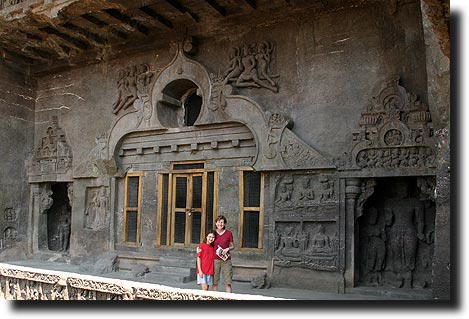
Alea and mom check out the carved entryway
|

While a two-toned Buddha keeps track of everyone.
|
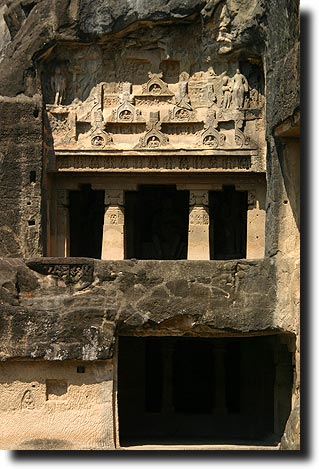 |
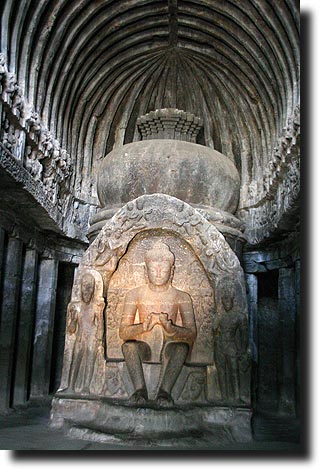 |
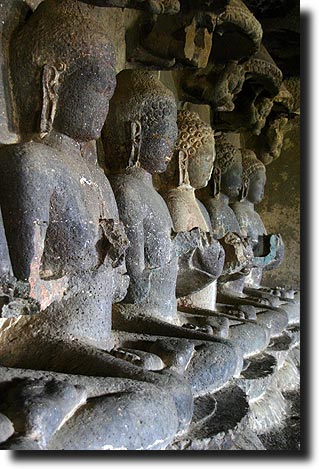 |
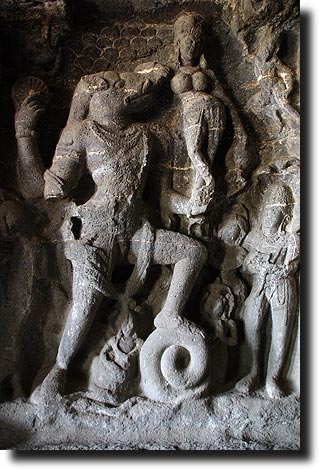
Filled with fantastical creatures, the caves document the stories and myths that still fascinate India today. As we wandered, awe-struck through the hallways, we tried to make up stories that fit. We had lots of fun imagining the conversations the heroes would have with each other. They always seemed to include carrots as a major plot line, however.
|

Enormous statues greet visitors to the caves designed during the Hindu periods. This gigantic room doesn't compare to the Kailasa, but gives an idea of the scale on which these monuments were built.
|

The Jain caves, the 'newest' at the site, are located about a kilometer away from the others.
|
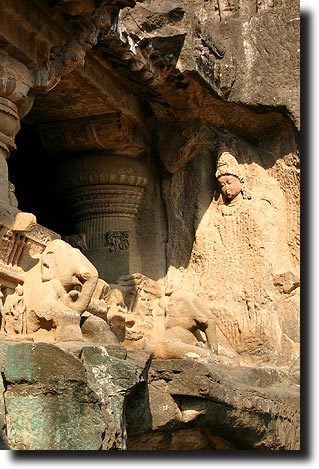
While nowhere near as extensive as the Buddhist or Hindu, they have the reputation of being the most intricately carved.
|
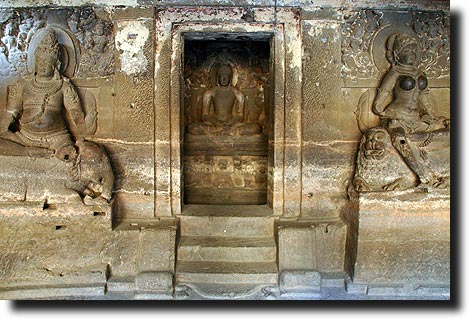
 |
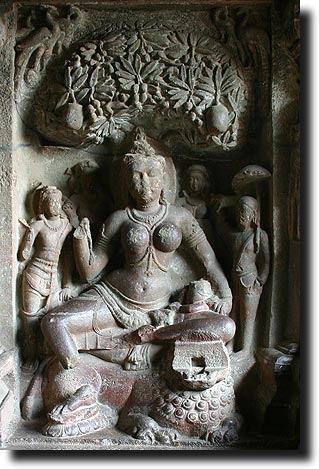 |
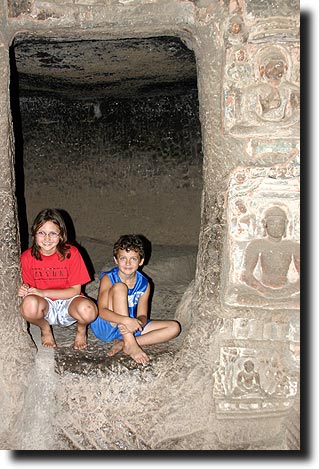 |
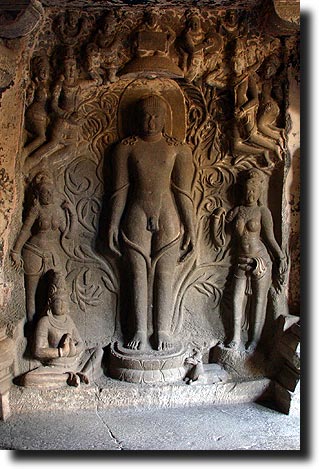 |
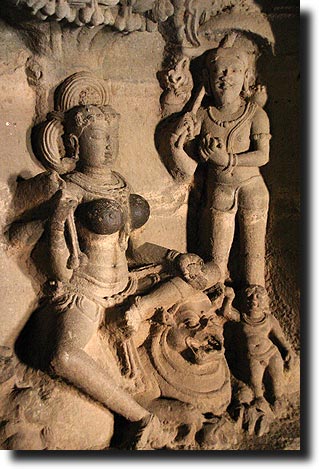 |
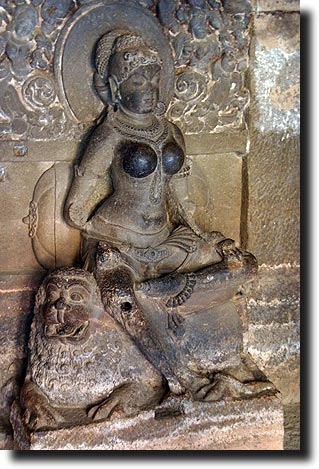 |